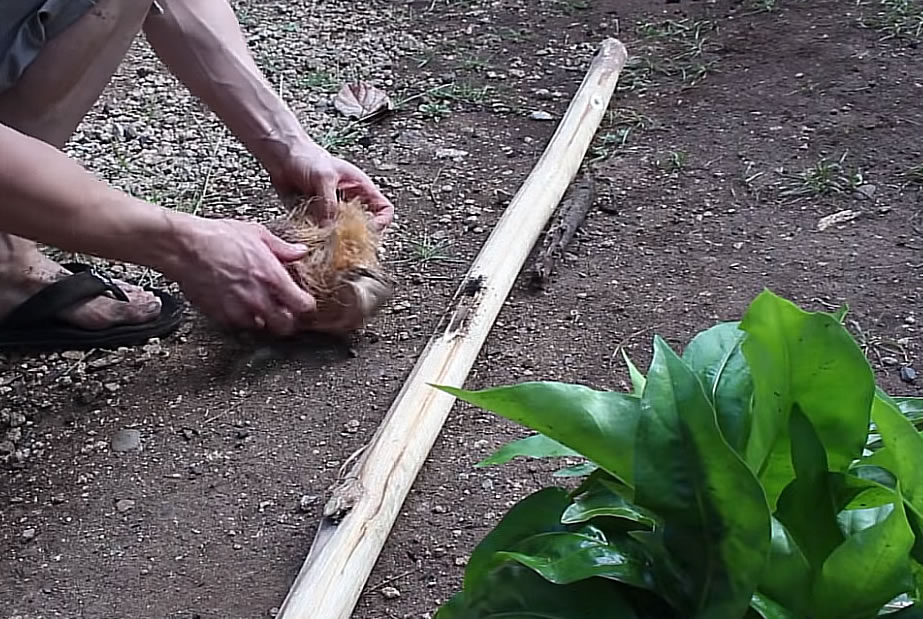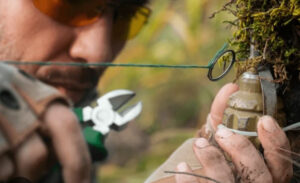In the spectrum of survival skills, few are as iconic and fundamental as the ability to create fire. Fire provides warmth, cooks food, purifies water, and can be a critical signal for help. In a situation where modern tools are unavailable, knowing how to start a fire with sticks can be a lifesaver. This age-old skill is not just about rubbing two sticks together; it’s an art, a testament to human ingenuity and resilience.
Understanding the Basics: The Science Behind the Friction
Creating fire with sticks revolves around the principle of friction. When two sticks are rubbed together with enough speed and pressure, the generated heat can produce an ember. However, this isn’t just about random rubbing; it requires the right materials and technique.
Choosing Your Tools: The Wood Matters
Not all wood is created equal when it comes to fire-starting. Softwoods are generally the best for friction fires due to their lower ignition temperatures. Cedar, basswood, willow, and spruce are excellent choices. The wood should be dry and free of rot or dampness.
The Fireboard and Spindle: Your Primary Tools
The two main components you need are a fireboard and a spindle. The fireboard is a flat piece of wood where you’ll create an indentation to hold the spindle. The spindle, a stick about the thickness of your thumb and approximately a foot long, is the stick you’ll rotate rapidly to generate friction.
Creating the Notch: Precision is Key
On your fireboard, cut a small depression where the spindle will sit. Next to this depression, cut a notch into the edge of the board. This notch is crucial as it allows the wood dust generated by friction to accumulate and eventually ignite.
The Bow Drill Method: A Step Further
For greater efficiency, many survivalists use the bow drill method. This involves using a curved piece of wood (the bow) strung with a cord to rotate the spindle more rapidly than can be achieved by hand. The bow’s motion back and forth spins the spindle, creating the needed friction.
Form and Technique: The Art of Spinning
Position the spindle into the depression on your fireboard. If using a bow drill, wrap the cord around the spindle. Use a piece of stone or wood as a socket on top of the spindle to apply downward pressure. The key is to maintain consistent pressure and speed as you spin the spindle.
The Ember: A Delicate Creation
As you spin, wood dust from the fireboard will accumulate in the notch and begin to smolder. This is where patience and care are crucial. Once you see a consistent stream of smoke, you likely have an ember.
Transferring the Ember: A Gentle Touch
Carefully transfer the ember to a nest of tinder (dry grass, leaves, or bark). Gently blow on the ember to provide oxygen, which will help it grow and eventually ignite the tinder.
Fueling the Flame: From Ember to Fire
Once the tinder catches, add small twigs and gradually increase to larger pieces of wood. The key is to not smother your fledgling fire but to nurture it.
The Last Reflection: Beyond the Flame
Mastering the skill of creating fire with sticks is about more than survival; it connects us to our ancestors and teaches us patience, precision, and respect for nature’s resources. It’s a reminder of the primal capabilities we possess and the ingenuity that has carried humanity through the ages.
In summary, the ability to start a fire using sticks is an invaluable skill for any survivalist or outdoor enthusiast. It requires practice, patience, and respect for the process. In a world where technology often overshadows basic survival skills, mastering this ancient technique is both empowering and deeply humbling. It’s a skill that harkens back to the roots of human ingenuity, a fundamental link to our past, and a crucial tool for any future survival scenario.
Practice and Persistence: The Path to Mastery
Like any skill, mastering fire creation with sticks requires practice. Start by honing your technique in a controlled environment, where the pressure of an actual survival situation isn’t looming. Pay attention to the type of wood you’re using, the formation of your notch, and the consistency of your spindle spinning. Over time, these elements will come together more naturally.
Adapting to Your Environment: A Key Survival Trait
In different environments, you’ll find various types of wood and materials. Adaptability is a key trait of any successful survivalist. Experiment with local materials to understand what works best in your area.
Safety First: A Responsible Approach
Always remember the importance of safety when practicing this skill. Ensure you’re in a safe area where a fire can be controlled, and have water or a fire extinguisher nearby. Never leave a fire unattended, and fully extinguish it when you’re done.
Final Thoughts: The Flame of Survival
Creating fire with sticks isn’t just a survival skill; it’s a rite of passage for anyone who seeks a deeper connection with the natural world. It teaches us about the delicate balance of the elements and our place within the greater ecosystem. In our fast-paced, technology-driven world, this skill is a reminder of the simpler, yet profound, capabilities we possess.
Whether you’re a seasoned prepper, an outdoor enthusiast, or simply someone who appreciates the art of survival, the ability to start a fire from scratch is a powerful tool. It’s a skill that speaks to the heart of self-reliance and our enduring human spirit.
Remember, the flames you create are more than a source of warmth or a means to cook food. They are a testament to human resilience, a beacon of hope in the darkness, and a symbol of the undying will to survive.


